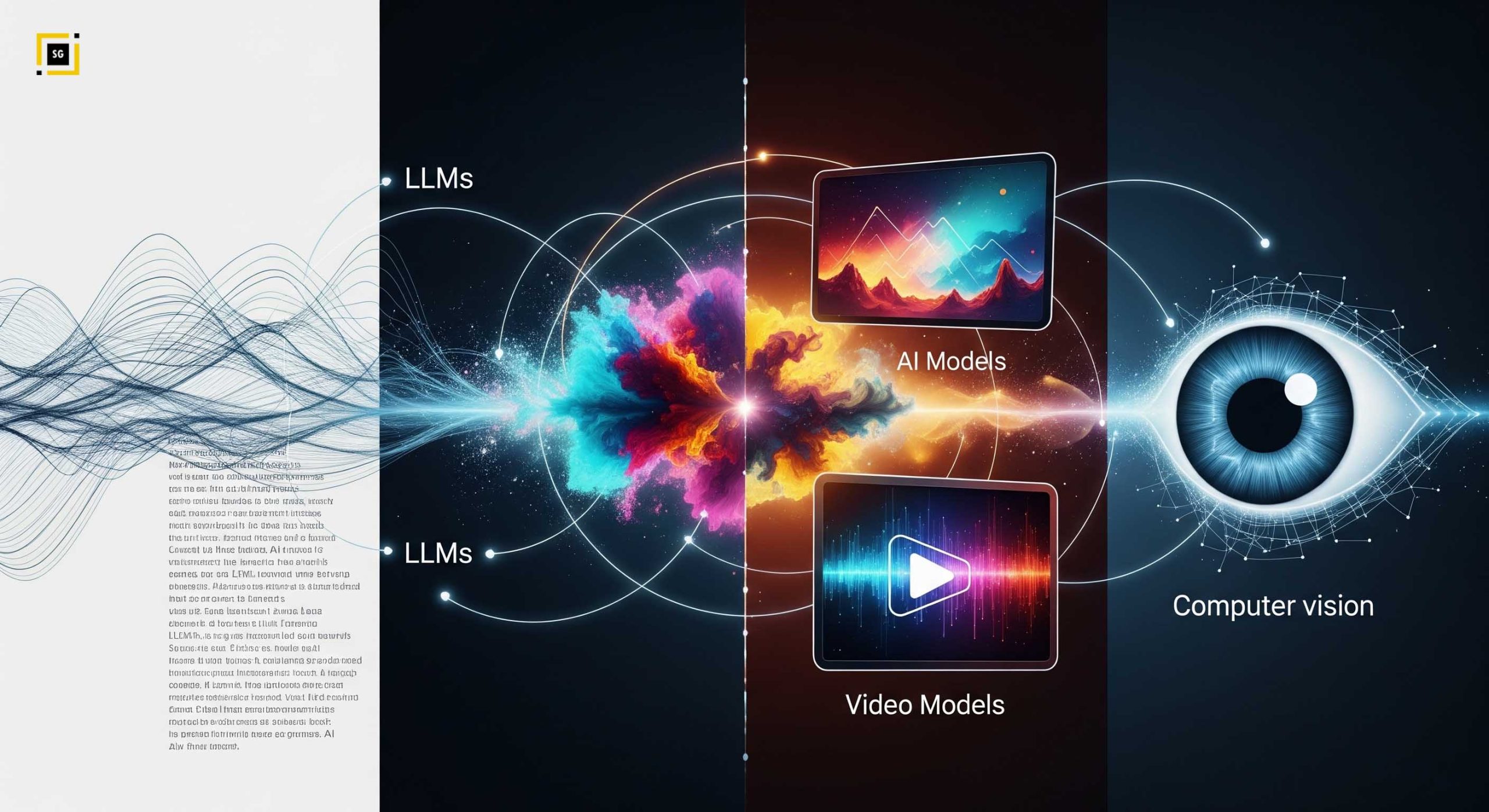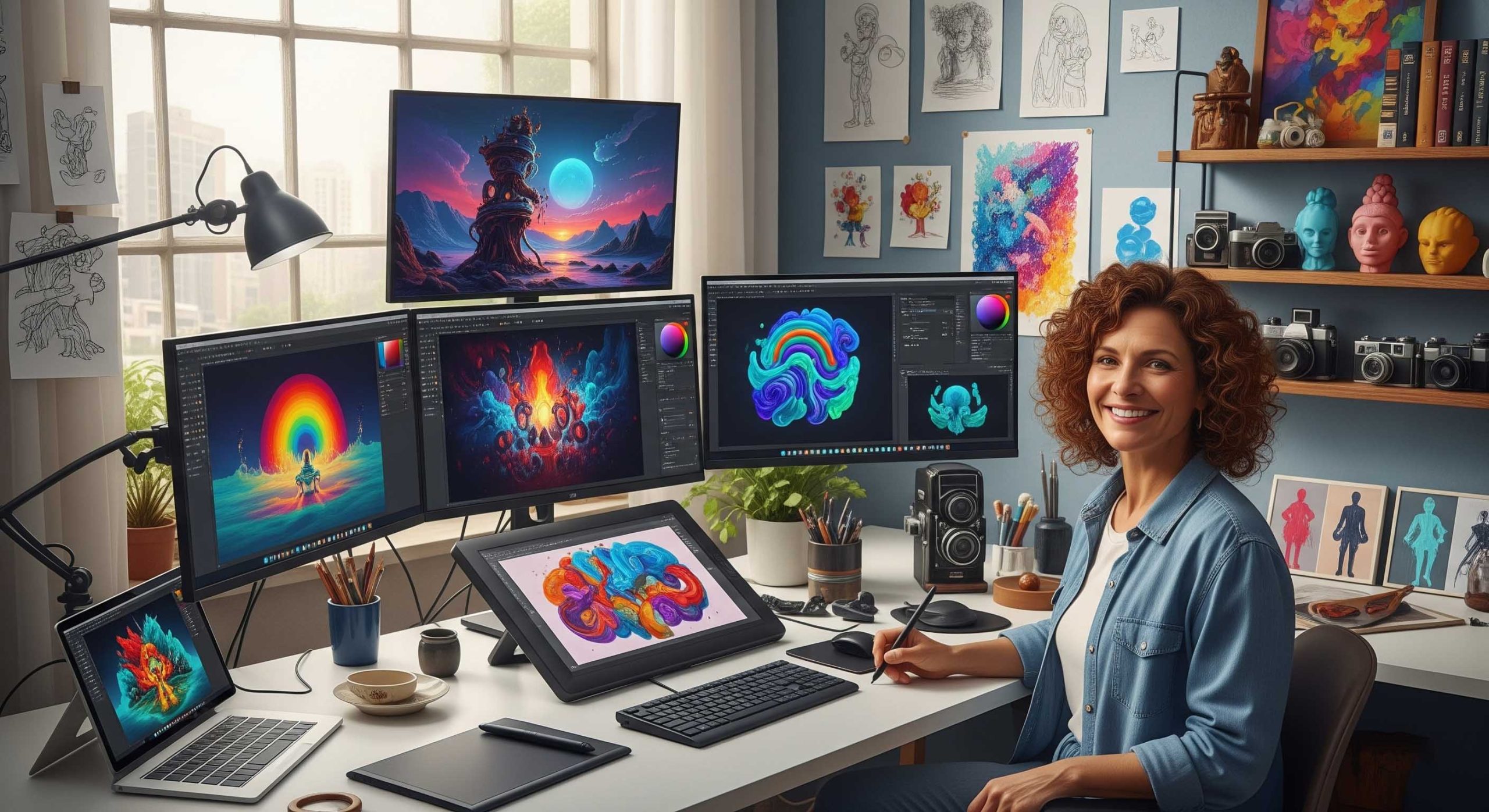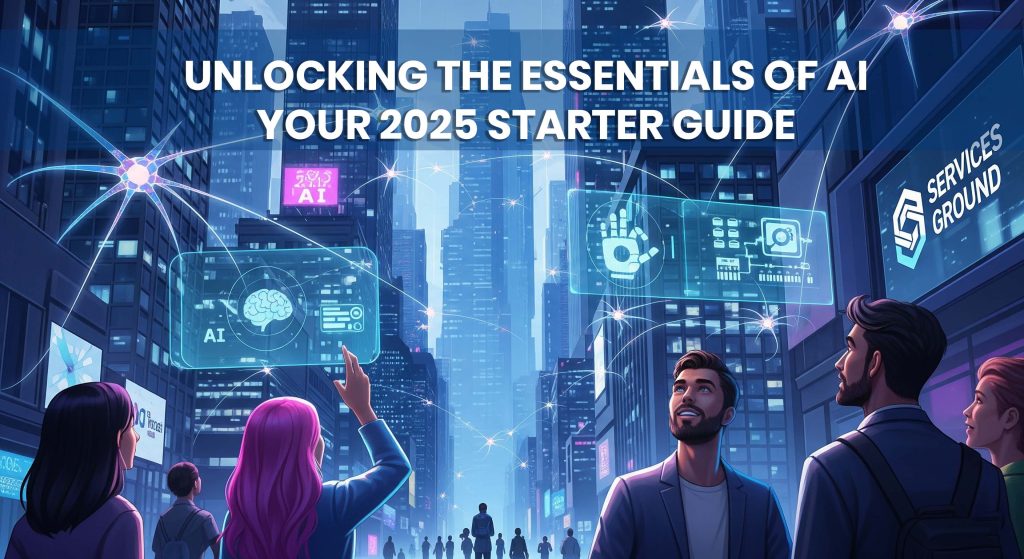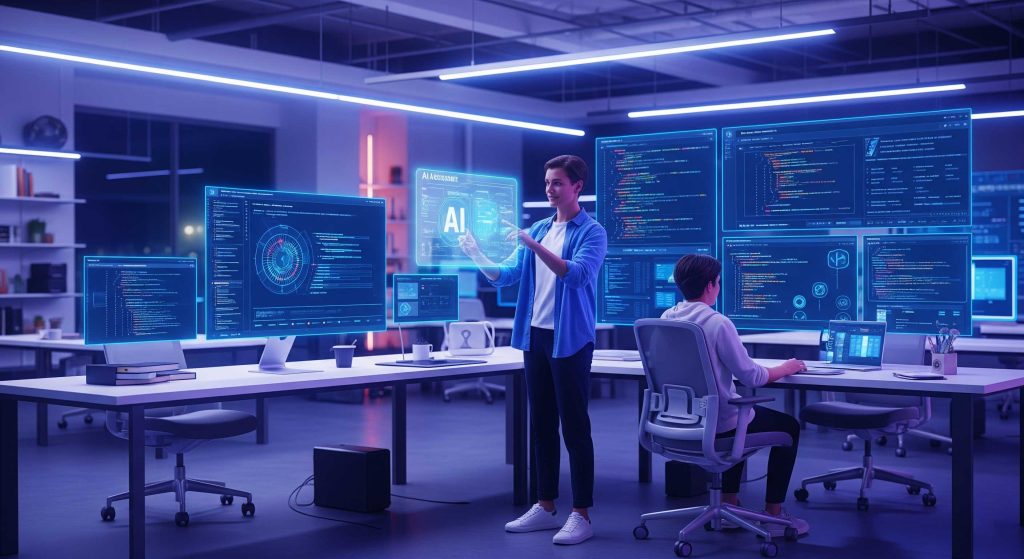Beyond the Buzzword – Understanding AI Models in Action
Artificial Intelligence has moved from theoretical discussions to practical applications that are reshaping every facet of our digital and physical worlds. But what exactly powers these transformations? The answer lies in the diverse and increasingly sophisticated array of AI models. In 2025, understanding these models is no longer just for AI researchers; it’s crucial for anyone looking to leverage AI’s power, whether you’re a business professional seeking innovative solutions or a curious individual wanting to grasp the technology behind the headlines.
This blog post will serve as your comprehensive guide to the major categories of AI models available today. We’ll demystify the core functionalities of Large Language Models (LLMs), explore the creative capabilities of image and video generation models, delve into the analytical prowess of computer vision, and uncover the integrated intelligence of multimodal and agentic AI systems. Our goal is to provide a clear, accessible overview that helps you understand what each type of model does, how it works at a high level, and where its true potential lies.
By the end of this read, you’ll have a solid grasp of the AI model landscape, enabling you to identify which types of AI are best suited for different tasks and how they are collectively driving the current wave of innovation. Let’s dive in and decode the fascinating world of AI models!
Key Categories of AI Models: A Functional Overview
AI models are specialized systems designed to perform specific types of tasks by recognizing patterns in data. While the underlying technology can be complex, their functions can be broadly categorized based on the type of data they process and the outputs they generate. Here are the primary categories dominating the AI landscape in 2025:
1. Large Language Models (LLMs): The Masters of Text
LLMs are perhaps the most talked-about AI models, and for good reason. Trained on vast amounts of text data from the internet, books, and articles, these models excel at understanding, generating, and manipulating human language. They can:
- Generate Text: Write articles, emails, marketing copy, code, scripts, and even creative content like poetry or fiction.
- Summarize Information: Condense long documents, reports, or conversations into concise summaries.
- Translate Languages: Convert text from one language to another with remarkable fluency.
- Answer Questions: Provide informative answers to a wide range of queries, often drawing upon their extensive training data.
- Reason and Problem Solve: Engage in complex reasoning tasks, follow instructions, and even debug code.
How they work (simplified): LLMs predict the next word in a sequence based on the words that came before it. Through billions of parameters, they learn the statistical relationships between words and phrases, allowing them to generate coherent and contextually relevant text. Recent advancements include massive context windows (allowing them to process entire books at once) and multimodal capabilities (understanding images alongside text).
Examples: OpenAI’s GPT series (GPT-4.5, GPT-4o), Google’s Gemini series (Gemini 2.5 Pro), Anthropic’s Claude series (Claude 3.7 Sonnet), Meta’s Llama series.
2. Image Generation Models: From Text to Visuals
These models are the artists of the AI world, capable of creating stunning visual content from simple text descriptions or modifying existing images based on instructions. They have revolutionized digital art, design, and marketing.
How they work (simplified): Many modern image generation models use a technique called
diffusion. This process involves starting with random noise and gradually refining it, guided by the text prompt, until a coherent image emerges. They can also perform tasks like inpainting (filling in missing parts of an image) and outpainting (extending an image beyond its original borders).
Examples: OpenAI’s DALL-E 3, Midjourney V7, Google’s Imagen 4, Stability AI’s Stable Diffusion.
3. Video Generation Models: Bringing Motion to Life
Building on the success of image generation, video generation models add the dimension of time, creating dynamic, moving sequences from text descriptions. While still a rapidly developing field, these models are becoming increasingly capable of producing short, consistent video clips.
How they work (simplified): These models extend image generation techniques by ensuring temporal coherence – meaning that objects and scenes remain consistent across frames. They learn to predict how pixels change over time to create fluid motion, often leveraging large datasets of video content.
Examples: OpenAI’s Sora, Google’s Veo 3, RunwayML’s Gen-4.
4. Computer Vision Models: Enabling AI to “See”
Computer Vision (CV) models empower AI systems to interpret and understand visual information from images and videos, much like the human eye and brain. They are critical for applications ranging from autonomous vehicles to medical diagnostics.
Key Capabilities:
- Object Detection: Identifying and locating specific objects within an image or video (e.g., recognizing cars, pedestrians, or traffic signs).
- Image Segmentation: Dividing an image into regions or segments, often to isolate specific objects or areas of interest.
- Image Classification: Categorizing an entire image based on its content (e.g., classifying an image as a picture of a cat or a dog).
- Facial Recognition: Identifying or verifying individuals based on their facial features.
- Activity Recognition: Understanding actions or events occurring in a video sequence.
How they work (simplified): CV models often use Convolutional Neural Networks (CNNs) or Transformers, which are designed to process visual data by identifying features at different levels of abstraction, from edges and textures to complex objects and scenes.
Examples: YOLO (You Only Look Once) series for object detection, Segment Anything Model (SAM) for image segmentation.
5. Multimodal Models: The Integrated Intelligence
Multimodal models represent a significant leap forward in AI, as they can process and generate content across multiple types of data simultaneously. This means they can understand and respond to inputs that combine text, images, audio, and sometimes video.
Key Capabilities:
- Cross-Modal Understanding: For instance, understanding an image and a text prompt about that image to generate a relevant response.
- Integrated Content Generation: Creating text descriptions for images, generating images from text and audio cues, or even generating video with accompanying audio.
- Enhanced Reasoning: By combining information from different modalities, these models can achieve a deeper and more nuanced understanding of complex situations.
How they work (simplified): Multimodal models typically integrate different specialized models (e.g., an LLM for text, a vision transformer for images) and train them together on datasets that contain corresponding information across modalities. This allows them to learn the relationships between different data types.
Examples: OpenAI’s GPT-4o, Anthropic’s Claude 3.7.
6. AI Agents: Autonomous Action and Goal Pursuit
Moving beyond simply responding to prompts, AI Agents are systems that use AI models (often LLMs) as their core reasoning engine but add capabilities for planning, tool use, and autonomous action. They are designed to accomplish specific goals on behalf of users with minimal human intervention.
Key Differentiating Factors:
- Autonomy: They can operate independently, making decisions and taking actions without constant human guidance.
- Goal-Oriented Behavior: They break down complex tasks into manageable steps and work through them systematically.
- Environmental Interaction: They can interact with digital environments (like web services, IDEs, or operating systems) to achieve their goals.
- Tool Use: They can leverage various digital tools and APIs to extend their capabilities.
- Adaptability & Reasoning: They can adjust strategies based on feedback and changing circumstances, incorporating sophisticated reasoning mechanisms.
How they work (simplified): An AI agent typically consists of a foundation model (like an LLM) for reasoning, a planning module to break down tasks, a memory system to retain context, and a tool-use framework to interact with external systems. They can self-monitor, reflect on their performance, and learn from feedback.
Examples: OpenAI’s Operator, Google’s Agentspace tools.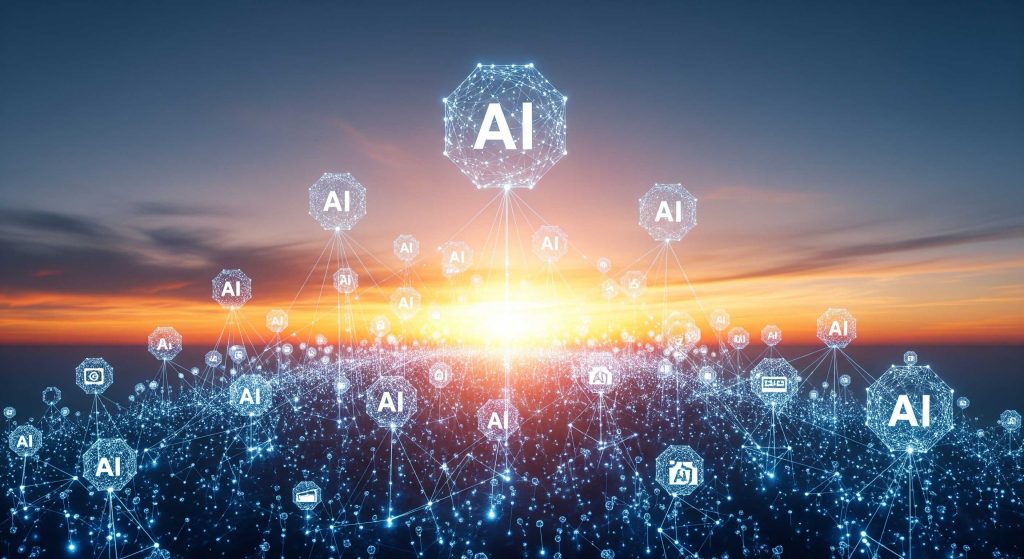
Conclusion: Navigating the AI Model Ecosystem
The landscape of AI models in 2025 is rich and diverse, offering an unprecedented range of capabilities. From the linguistic prowess of LLMs to the creative power of generative AI, the analytical depth of computer vision, the integrated understanding of multimodal models, and the autonomous action of AI agents, each category plays a vital role in shaping the future of technology.
Understanding these different types of AI models is the first step towards harnessing their potential. Whether you are looking to automate business processes, enhance creative workflows, gain deeper insights from data, or simply stay informed about the cutting edge of technology, knowing what each model can do will empower you to make informed decisions.
As AI continues to evolve, these categories will undoubtedly become even more sophisticated and interconnected. Staying curious and continuously learning about these advancements will be key to navigating and thriving in the AI-powered world of tomorrow.
Stay tuned for our next posts, where we will delve deeper into specific applications and advanced concepts for each of these exciting AI model types!

